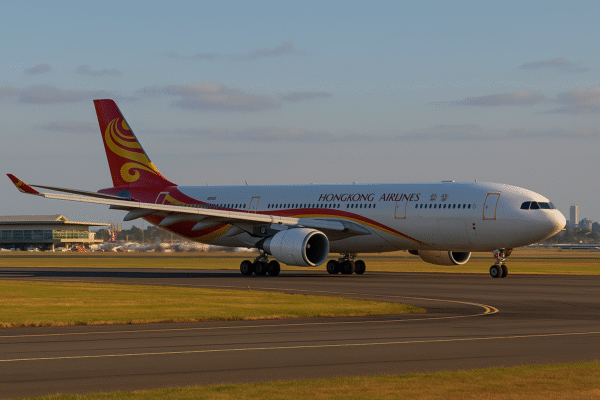For decades, the United States passport has been seen as one of the most powerful travel documents in the world—an emblem of ease, privilege, and global access. However, the recently released Henley Passport Index Q3 2025 has revealed a sobering shift: the US passport has dropped to its lowest-ever global ranking, currently sitting at number 11, behind countries like Japan, Singapore, Germany, Italy, and South Korea.
This marks a historic moment and a turning point for US travelers, who are now facing increased scrutiny, longer visa processing times, and limited access to formerly visa-free destinations.
What the Henley Passport Index Measures
The Henley Passport Index, developed by Henley & Partners and based on exclusive data from the International Air Transport Association (IATA), ranks global passports according to the number of destinations their holders can access visa-free or with visa-on-arrival. The 2025 index highlights that US passport holders now enjoy visa-free access to just 184 destinations, a significant dip from earlier years.
By comparison, citizens of France, Germany, Italy, Japan, Singapore, and Spain can travel to 194 destinations without a visa, giving them a far wider reach than their American counterparts.
Why the US Passport Is Declining
This shift is attributed to multiple factors:
- Geopolitical tensions: Ongoing friction with countries such as China, Russia, and Iran has translated into tightened entry restrictions.
- Stricter visa policies: More countries are requiring Americans to apply for electronic travel authorizations or full visas.
- Reciprocal travel rules: As the US enforces stricter policies for certain countries, those nations are reciprocating.
Additionally, new border security systems being introduced by the European Union—such as the European Travel Information and Authorisation System (ETIAS) and Entry/Exit System (EES)—will come into effect by mid-2025, meaning that US travelers will need to register in advance and face additional data-sharing requirements when visiting most European countries.
Where US Travelers Face More Restrictions
Regions where American travelers are now facing greater entry complexity include:
- Europe: The implementation of ETIAS requires pre-authorization before entry.
- Middle East: Due to political friction, visa rules are becoming more stringent.
- Asia: Countries like China and India maintain detailed visa application processes for Americans.
Conversely, destinations such as Mexico, Brazil, Colombia, Thailand, and South Africa remain relatively accessible and are seeing a rise in US tourist arrivals due to fewer bureaucratic hurdles.
How the Travel Industry Is Adapting
In response to these changes, US-based travel companies are adapting their services to provide added support:
- Visa facilitation services: Travel agencies and OTAs are increasingly offering digital visa assistance tools.
- Travel insurance with visa support: Insurance policies now often include legal and administrative help for denied entries or delays.
- Real-time travel advisory platforms: Apps such as Sherpa and iVisa are popular among American travelers for up-to-date visa and entry requirement tracking.
According to the US Travel Association, American international travel spending hit $126 billion in 2024, with expectations for continued outbound growth. However, the complications of new visa systems and reduced passport power are prompting a shift in travel patterns.
Shifting Preferences: Where Are Americans Traveling Now?
Given increased travel restrictions in parts of Europe and Asia, US tourists are turning toward alternative destinations with simplified entry requirements and visa-free access. In 2025, popular regions include:
- Central and South America: Costa Rica, Colombia, Panama, and Brazil are among the top picks.
- Southeast Asia: Countries like Thailand, Malaysia, and the Philippines continue to attract American travelers.
- Africa: Morocco and South Africa offer strong tourism infrastructure and simplified visa-on-arrival programs.
Many of these destinations are also tapping into the sustainable tourism movement, offering eco-lodges, cultural immersion programs, and carbon-neutral travel options—perfect for the growing number of American travelers looking for purpose-driven, environmentally-conscious vacations.
What the Future Holds for American Travelers
While the decline in passport power poses challenges, it also signals a new chapter in global travel behavior. Here’s what US travelers should expect moving forward:
- Longer travel planning timelines: Visa applications may take weeks or months.
- More destination research: Travelers will need to carefully check entry requirements, costs, and digital border systems.
- Digital identity and biometric systems: Technologies like facial recognition and electronic authorizations will become standard across many countries.
- Increased demand for concierge services: High-end travelers are turning to luxury tour operators and travel concierges who handle complex visa logistics.
The Department of State and U.S. Customs and Border Protection (CBP) have acknowledged the growing complexity of outbound travel and continue to issue updated travel advisories. Meanwhile, American travelers are encouraged to register with the Smart Traveler Enrollment Program (STEP) to stay informed of embassy notices and emergency updates while abroad.
Final Thoughts: Global Travel in a Fragmented World
The fall of the US passport in Henley’s global rankings is more than a data point—it’s a reflection of broader shifts in global power, diplomacy, and mobility. For American travelers, this means that passport privilege can no longer be taken for granted.
Yet travel is still very much possible—albeit with more planning, more paperwork, and greater awareness. The world remains open to exploration, but navigating it will require a different level of preparedness in 2025 and beyond.
With smart tools, a flexible mindset, and a deeper respect for international systems, American travelers can still unlock unforgettable global experiences—just with a bit more effort than before.
For more travel news like this, keep reading Global Travel Wire






















